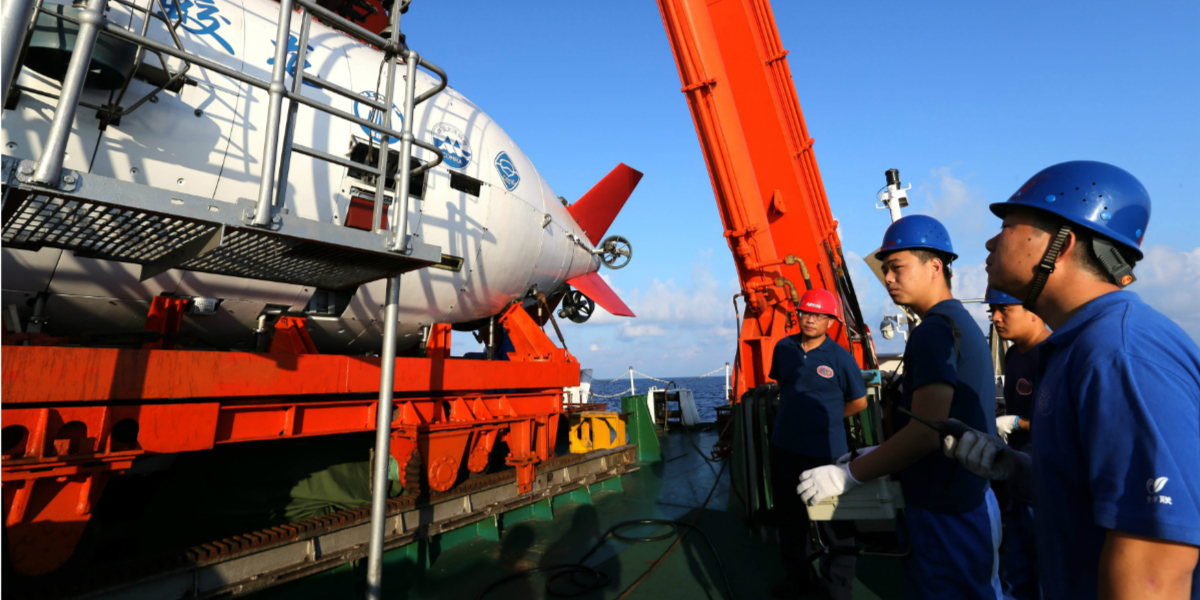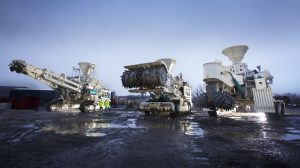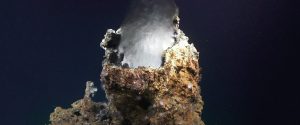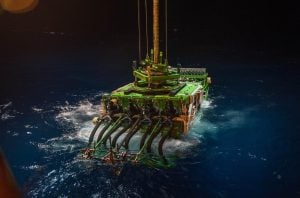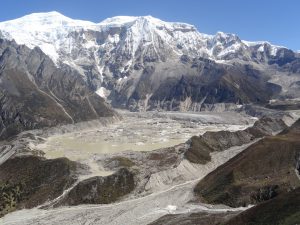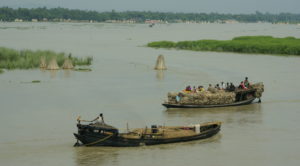China’s most famous manned deep-sea submersible, recently upgraded at great expense, is named after the legendary aquatic dragon Jiaolong. Another mythical dragon, the Dragon King, also frequents the seabed, in a palace filled with unimaginable treasures. While the palace may be legendary, the Jiaolong could soon be set to find real treasures, 7,000 metres deep.
In 2020, it will commence its first round-the-world voyage and one of its key tasks will be to investigate seabed minerals.
China is the world’s largest manufacturer of electronics, solar panels and wind turbines. That means a huge demand for metals essential to these products, such as copper, nickel, manganese and cobalt. They also require rare earths, which China is the largest producer of, as it is of gold and aluminium.
But with land reserves of key minerals dwindling, extraction is becoming harder and more expensive. So, many nations including China are keen to prospect for deep-sea minerals. The exploration and extraction of these minerals in international waters is governed by the International Seabed Authority, which is based in Kingston, Jamaica. China currently holds the largest number of exploration contracts from the authority. Does this mean it will be first to start commercially mining the deep?
The lure of the deep
The question of how long mineral reserves on land will last is already pressing. Land supplies of nickel, which is widely used in solar panels, can only meet another 40 years of demand. But the deep-sea reserves of nickel so far identified could extend that by another 40.
Some also believe that deep-sea mining will work out better value than mining on land, as at will be free of the costs of disputes.
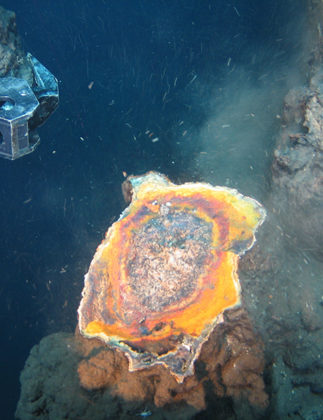
“There’s huge potential for it, because the reserves are massive,” said Xue Guifang, of the Centre for Polar and Deep Ocean Development at Shanghai Jiaotong University, adding that there is international consensus on this point.
Xue said there are two reasons mining hasn’t started yet. Reserves on land are still commercially viable, and the legal preparations aren’t yet complete. However, “everyone views deep sea resources as usable.”
Globally, deep-sea mining technology is shifting from a period of experimentation towards commercial operations.
In September 2017, a Japanese mining vessel carried out a “large-scale” extraction of minerals from 1,600 metres beneath Japan’s exclusive economic zone off Okinawa. The amount of ore collected and the profitability of the operation are not yet known. However, in February this year a deep-sea mining venture run by Canada’s Nautilus Minerals for the last eight years was halted due to lack of investment. Nautilus was hoping to be the world’s first legal and commercial deep-sea mining operator.
Technological constraints
So how are China’s preparations for deep-sea mining going? It’s a bit complicated.
China has obtained four of the 29 contracts issued by the International Seabed Authority. These include all three available types of contract and cover a wider area than is held by any other nation.
Considering the enormous sums put into the Jialong it is clear that China is taking deep-sea prospecting very seriously and ranks among the most advanced nations in terms of prospecting technology.
But in mining technology, China still lags behind Japan, Korea and Western nations. Japan invented a deep-sea mining system in 1967, which was later tested at a depth of 4,500 metres. Since then researchers in France and the US have come up with a range of other systems. Today, the leading deep-sea mining tech firms are Nautilus Minerals and Australia’s Neptune Minerals.
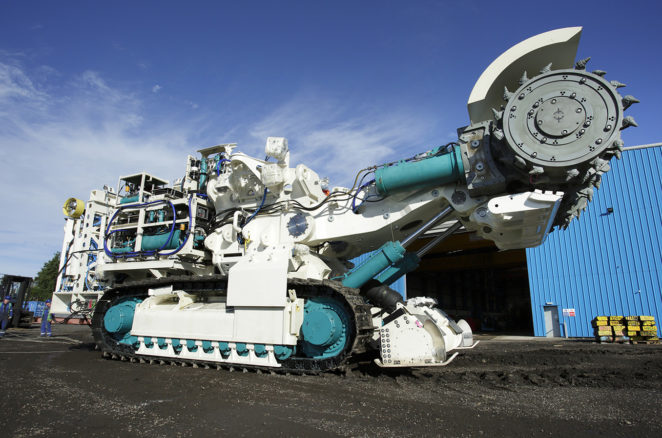
In comparison, sea trials of China’s system to pump minerals up from the seabed reached a depth of only 304 metres. The Kunlong, a mining vessel built as part of the same project as the Jiaolong, cannot mine deeper than 500 metres.
But Liu Shaojun, a professor at Central South University who works on design and control of deep-sea equipment, thinks that a nation’s deep-sea mining capabilities can’t be judged solely on depths achieved. Research completed and industry capabilities are relevant too.
“Overall, I think China’s deep-sea mining technologies and capabilities rank above average, internationally,” Liu said.
Observers point out that while speeding up domestic research, China is also looking for resources overseas. For example, China’s CRRC Group has acquired the UK’s SMD, a manufacturer of deep-sea submersibles. While Fujian Mawei Shipbuilding, which is building Nautilus Minerals’ production support vessel, is actively working with foreign firms.
Policy support
China’s latest two Five-Year Plans for the marine economy show it intends to be actively involved in deep-sea development. Will strong policy support lead to breakthroughs?
The 12th (2011-2015) and 13th (2016-2020) Five-Year Plans put the date of China’s application for deep-sea exploration contracts and research prospecting equipment at between 2011 and 2015. Two of the three exploration contracts held by the China Ocean Mineral Resources R&D Association were obtained during that period.
But neither of the two plans were clear on exactly how the aim of “promoting commercialisation of deep-sea mining, manufacturing of deep-sea equipment and utilisation of deep-sea bioresources” would be achieved, or when.
In 2020, we will see what fate awaits the seabed.
According to Xue Guifang, China started research into deep-sea mining in the 1980s, and has had 40 years of reliable funding and outcomes since then. Therefore Xue Guifang doesn’t rule out the possibility of “leaps” forward in the near future.
Duncan Currie is a consultant with the High Seas Alliance, which monitors deep-sea mining issues. He thinks China does not seem to be in a hurry to start deep-sea mining, both because it still has ample mineral reserves, and because as demand for metals fluctuates with industrial demand it is not yet certain that deep-sea mining will be necessary.
China’s strategic thinking on deep-sea mining may become clearer once the Jiaolong has completed its 2020 round-the-world voyage and China has an understanding of what resources are available.
Ecological risks
One cause of the intense international interest in deep-sea mining, alongside the geopolitical impact of the allocation of mining rights, is the environmental risk to the seabed.
The collection of metallic nodules from the seabed will affect habitats of creatures such as octopuses and sea sponges, and the waters in which metallic sulphides are created are often also biodiversity hotspots. According to Currie, there is still much to be done before deep-sea mining can really get started: a legal system needs to be put in place, and more research and better technology for biodiversity protection are needed.
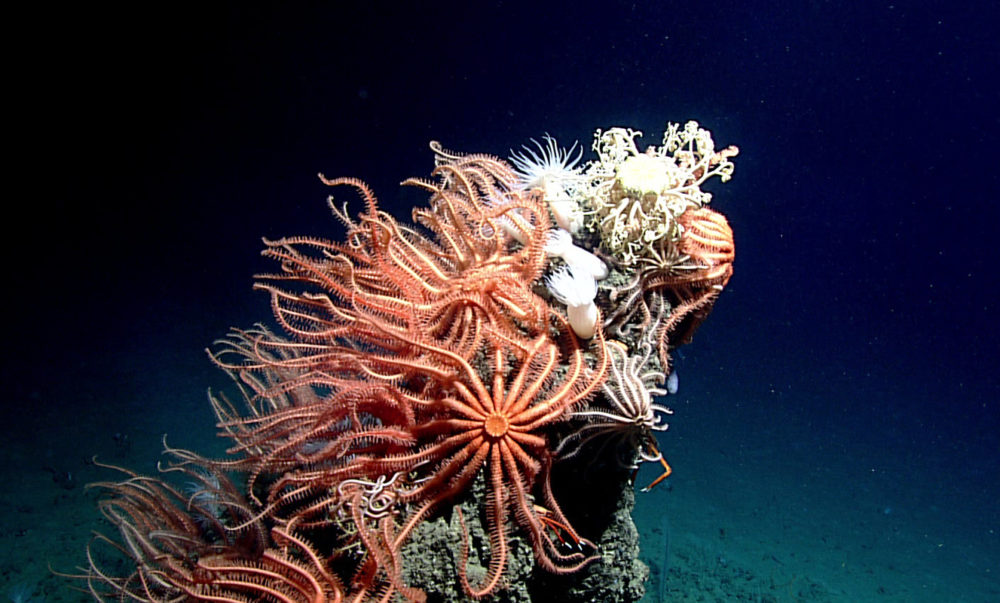
As an emerging economy facing various environmental challenges at home, China’s environmental regulation of deep-sea mining is drawing global attention.
China has started to put legislation and mechanisms in place. It passed a Deep Sea Mining Law in 2016, followed by regulations for the licensing of deep-sea mining in 2017, ruling on how organisations can obtain permission to mine the deep, and how they should do it. The two laws take account of the commitment made by China to the International Seabed Authority (ISA) that Chinese operators will operate within a legal framework when deep-sea mining permits are issued.
But despite the Deep Sea Mining Law being in place in China, it will take some time for a complete legal and regulatory system to take shape, as the law will need to be followed up by complementary regulations, such as those on licensing mentioned above. There are also temporary regulations on data and samples collected during deep-sea prospecting. Rules on environmental protection are still being drafted.
Of course, China is a signatory to the UN Convention on the Law of the Sea, and so its activities in international waters will be constrained by international law. Currently the ISA is working on a code that will govern deep-sea mining, which is due to be finalised at its two meetings this year. These will be the basic standards China and other nations must abide by.
China has always played an important role at the ISA. It joined in 1996, only two years after the authority was formed, and was one of its biggest funders. Now it is one of its biggest member states, a member of Group A, which has a more powerful vote on the council. Shanghai Jiaotong University’s Centre for Polar and Deep Ocean Development, a Chinese research body, also has observer status. But it remains to be seen whether China having a relatively large say in deep-sea mining affairs will mean it does more to protect the environment.
And in 2020, the deadline the ISA has set for finalising its regulations, we will see what fate awaits the seabed.
This article is part of our deep-sea mining series. Read more here:
The future of deep seabed mining
Can a ‘mining code’ make deep seabed extraction sustainable?
Deep seabed mining: key questions
Species threatened by deep-sea mining
We need to better understand the deep ocean if mining is to go ahead
